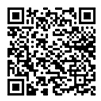Demat account concepts & processes

The definition of Demat accounts is relatively simple. It's an automated way to keep track of all of one's finances, including equity, stocks, and mutual funds.
The definition of Demat accounts is relatively simple. It's an automated way to keep track of all of one's finances, including equity, stocks, and mutual funds.

Open a Demat Account
A Demat Account's Objectives and Aims
There are some reasons why opening a Demat account has heavily advertise since its inception. The reasoning behind it is as follows:
- 1.Because Demat accounts allow investors to keep shares in electronic form rather than physical form, there is no chance of misplacement, injury, fraud, or forgery, as there is with physical shares. As a result, a Demat account aims to make stock handling safer than before.
- 2.A Demat account seeks to simplify processes as well. Transferring shares is now cheaper than ever, and it can do in a matter of hours rather than months. Furthermore, with the introduction of Demat accounts, changing addresses has become more seamless and time-consuming.
- 3.Another place where Demat accounts want to change is convenience. It also eliminated time-consuming procedures such as purchasing and pasting capital market stickers and limits on trading shares of odd lots. As a result, the process is simple and convenient.
Furthermore, share transfers require much less documentation because of the automated mechanism, making them a cost-effective operation. Now that you know what Demat accounts are and what they're about let's look at some of the terms and procedures that go along with them.
Transfer, Closure, cum Waiver (TCW)
Individuals can move their assets from one Demat account to another without incurring any extra fees. If they choose this option, the Beneficiary Owners (BO) accounts at both the transferor and transferee Depository Participant (DP) are similar. They will have to open a new Demat account with the same names if they want to pass a shared Demat account.
Procedure
- The account holder(s) shall apply the adequately completed form to the institution in person. An authorized signatory of the organization may pass or close corporate accounts.
- In the presence of a DP official, all holders shall sign the form.
- Each joint holder must sign in the presence of a bank representative.
- A stamped and signed copy of the crystal report or customer master report from the current account's central depository, where the move proposed, must be forwarded.
- All instruction sheets that have not been using must be canceled and returned.
- The self-attested identification evidence copy must be sent and checked by a bank official.
- On all new and old Demat accounts, the account holders' names and particulars must be similar.
Depository concepts
A depository is a centralized storage facility for all electronic securities. The Central Depository Services Limited (CDSL) and the National Securities Depository Limited (NSDL) are two such depositories in India (NSDL). Individuals may use one of the DPs to provide these facilities under the Depositories Act.
Dematerialization of Securities
Physical certificates transformed into electronic shares during this process. All trades are now carried out online, so investors must follow suit.
Dematerialization Procedure
The DP will check the data after receiving the certificate and the Demat Request Form (DRF) before sending them to the Company or Registrar. The dematerialization process takes about 30 days to complete.
Dematerialization Credit
The Registrar of Company handles the request after receiving the DRF and physical securities. When the transaction is complete successfully, the holders' Demat accounts are compensated with an equivalent number of electronic securities. If the appeal is turned down, investors should notify the DP for assistance in submitting a new DRF.
Demat cum transmission
If the investment is kept together in a deceased investor's name, the documents, the death certificate, and the Transmission cum Demat form must be sent to the DP by the living holder/s. The remaining account holders' names must fit the information on the Demat account.
Transposition cum Demat
Suppose the names on the Demat account do not match the names on the physical certificates. In that case, a Transposition cum Demat form must be sent to the DP to translate the physical certificates to an electronic format.
Re-materialisation
Through uploading the Remat Request Form, electronic holdings translated to physical certificates (RRF). Both holders must sign the RRF, which the DP must then check before being sent to the Company or Registrar.
Freezing and De-freezing
By appealing to the DP, Demat account holders will have their accounts frozen. Holders must file a request in the appropriate format as specified by the DP to de-freeze their accounts.
Closure
A submission form must be completed and signed by all owners. Before closing the Demat account, all of the account's holdings must be moved. Closing a Demat account that has outstanding dematerialization demands or company activities is not feasible.
Users will begin financial preparation by stock investing until they understand the different principles and how a Demat account operates.
Recent Posts
Download The Dealmoney App Now
Latest Top 10 Performing Funds
| Scheme Name | NAV on | Holdings | Returns (%) | Fund Manager | Rating | |
|---|---|---|---|---|---|---|
| Tata Nifty Pvt Bank ETF | 112.1161 | ₹ 953.7591472 Cr | 24.1384707538614% | Sailesh Jain | 1 | |
| ICICI Pru Technology Fund(G) | 53.41 | ₹ 35414.76052571 Cr | 23.1765904789635% | Sankaran Naren , Vaibhav Dusad , Priyanka Khandelwal | 2 | |
| Edelweiss ETF - Nifty Bank | 2047.9931 | ₹ 72.31 Cr | 22.3638817077987% | Bhavesh Jain , Hardik Verma | 3 | |
| SBI-ETF Nifty Bank | 202.4212 | ₹ 242503.74 Cr | 22.2708812094408% | Raviprakash Sharma | 3 | |
| Kotak Banking ETF | 205.2306 | ₹ 379580.55 Cr | 22.2131952311096% | Devender Singhal , Satish Dondapati | 3 | |
| Motilal Oswal Nifty Bank Index Fund-Reg(G) | 7.3638 | ₹ 4036.5684866 Cr | 22.0669674905138% | Swapnil P Mayekar | 2 | |
| Tata Digital India Fund-Reg(G) | 13.9041 | ₹ 34333.78900578 Cr | 19.4938524951637% | Meeta Shetty , Rahul Singh | 2 | |
| Aditya Birla SL Digital India Fund(G) | 51.49 | ₹ 38115.86 Cr | 19.046875% | Kunal Sangoi | 5 | |
| Kotak Small Cap Fund(G) | 61.52 | ₹ 124241.39 Cr | 18.6944214108026% | Pankaj Tibrewal | 2 | |
| Quant Small Cap Fund(G) | 38.9382 | ₹ 176.1202212 Cr | 17.7394878340161% | Ankit Pande , Vasav Sahgal , Sanjeev Sharma | 1 |
| Scheme Name | NAV on | Holdings | Returns (%) | Fund Manager | Rating |
|---|
